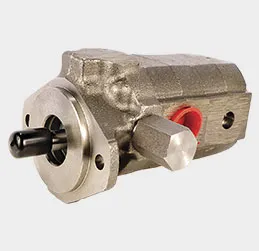CF8 and CF8M Stainless Steels Properties and Applications for Industrial Use
Understanding CF8 and CF8M The Essential Stainless Steels for Your Applications
Stainless steel is highly regarded for its exceptional resistance to corrosion and its ability to maintain structural integrity over a range of temperatures. Among the various classifications of stainless steel, CF8 and CF8M stand out as important materials in many industrial applications. These two alloys belong to the austenitic category of stainless steels and have unique properties that make them suitable for diverse uses.
What are CF8 and CF8M?
CF8 and CF8M are both cast stainless steel grades primarily used in the manufacturing of valves, pumps, and fittings in the chemical and petrochemical industries. The American Society for Testing and Materials (ASTM) classifies these materials under A351 specification.
CF8 is essentially a stainless steel grade equivalent to 304 stainless steel. It consists primarily of iron, with a minimum of 18% chromium and 8% nickel. This composition gives CF8 excellent corrosion resistance, particularly in atmospheric and mildly corrosive environments. It's known for its formability and weldability, making it a versatile choice for various applications.
CF8M, on the other hand, is comparable to 316 stainless steel. It contains a higher nickel content than CF8, as well as the addition of molybdenum (about 2-3%). The inclusion of molybdenum enhances its resistance to pitting corrosion, particularly in chloride-rich environments. CF8M is thus better suited for more aggressive applications, such as those found in marine environments or when handling chemicals.
Properties and Benefits
.
1. Corrosion Resistance The chromium content in both CF8 and CF8M provides a protective oxide layer that prevents rust and corrosion. CF8 is sufficient for lighter-duty applications, while CF8M is ideal for harsher conditions.
cf8 cf8m

2. Weldability Both alloys can be easily welded, maintaining the integrity of the material during the process. This characteristic is crucial in crafting complex components used in piping systems, tanks, and other constructions.
3. High-Temperature Resistance CF8 and CF8M can withstand high temperatures, which makes them suitable for applications in industries like oil and gas, power generation, and food processing.
4. Versatility These alloys can be used in various conditions, from atmospheric applications to demanding chemical processes, owing to their strength and durability.
Applications
The versatile nature of CF8 and CF8M leads to their use in numerous applications
- Chemical Processing Their excellent corrosion resistance makes CF8M a popular choice for handling acids and other corrosive substances. - Aerospace The mechanical properties at elevated temperatures make these alloys suitable for aerospace components where robustness is critical. - Food and Beverage Industry CF8 is often employed in pumps and valves used for food processing, ensuring hygiene and safety. - Pharmaceuticals Both grades are ideal for sanitary applications in the pharmaceutical industry, where cleanliness is paramount.
Conclusion
In conclusion, CF8 and CF8M stainless steels are crucial materials in the industrial landscape, providing excellent performance in various environments. Their corrosion resistance, weldability, and ability to maintain strength at high temperatures make them indispensable in applications ranging from chemical processing to aerospace. Understanding the differences between these materials can help engineers and manufacturers make informed decisions about which alloy is best suited for their specific needs. As industries continue to evolve, the demand for reliable and high-performing materials like CF8 and CF8M will remain strong, leading to ongoing innovations and developments in stainless steel technology.
-
OEM Sand Cast Pump Valve Fittings - Baoding Hairun | Precision Engineering, CustomizableNewsJul.30,2025
-
OEM Sand Cast Pump Valve Fittings - Baoding Hairun Machinery And Equipment Trading Co., Ltd.NewsJul.30,2025
-
OEM Sand Cast Pump Valve Fittings - Baoding Hairun Machinery And Equipment Trading Co., Ltd.NewsJul.30,2025
-
OEM Sand Cast Pump Valve Fittings - Baoding Hairun Machinery|Precision Engineering&Fluid ControlNewsJul.30,2025
-
OEM Sand Cast Pump Valve Fittings - Baoding Hairun Machinery And Equipment Trading Co., Ltd.NewsJul.30,2025
-
OEM Sand Cast Pump Valve Fittings-Baoding Hairun Machinery And Equipment Trading Co., Ltd.NewsJul.30,2025















